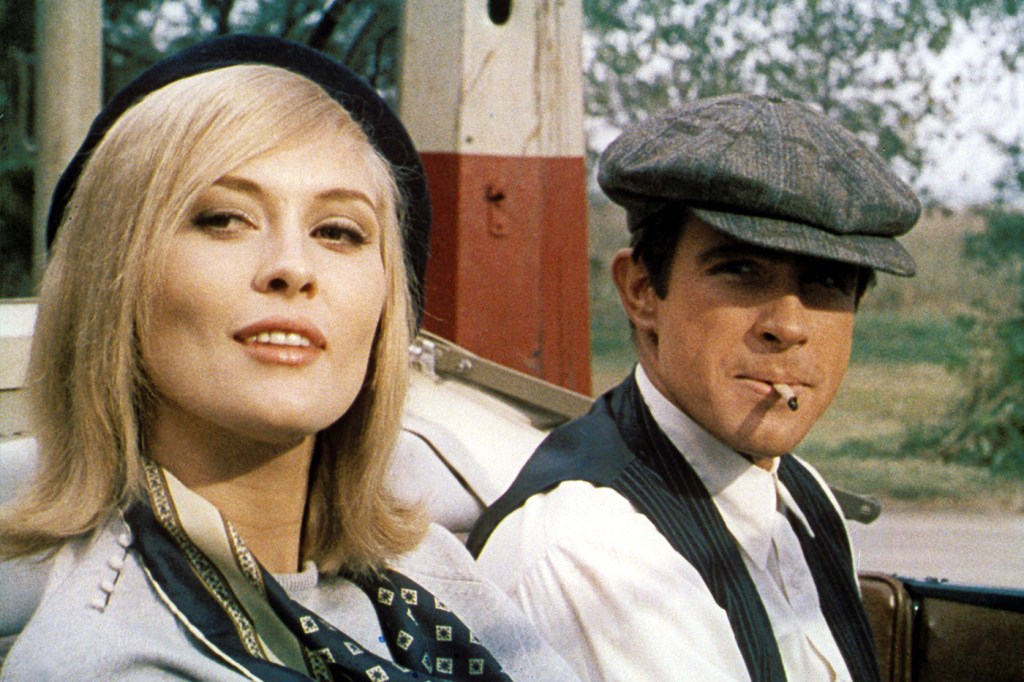At 50, Bonnie and Clyde still a ‘timeless’ classic

This month marks the 50-year anniversary of the release of Bonnie and Clyde, one of Hollywood’s most transformative films. According to Northeastern film historian Nathan Blake, the bloody biopic, starring Warren Beatty and Faye Dunaway as young lovers on the lam in the middle of the Great Depression, “established a new threshold for on-screen violence” and “ushered in a new wave” of auteurs including Martin Scorsese, Robert Altman, and Francis Ford Coppola.
“It still holds up today,” said Blake, associate teaching professor in the College of Arts, Media and Design, who’s screened the 10-time Oscar nominee in his film history course. “Because it speaks to the anti-authoritarian mindset, it tends to feel a little timeless.”
And yet Bonnie and Clyde didn’t exactly wow audiences when it hit theaters in August of 1967. It flopped at the box office, making just $2.5 million that year, and most critics hated it. The New York Times assailed the film as “a cheap piece of bald-faced slapstick comedy” and Time called it “a strange and purposeless mingling of fact and claptrap that teeters uneasily on the brink of burlesque.”
“The violence was very shocking, particularly for older critics,” said Blake, a cinephile who spent his 20s watching independent art house films before going on to earn his doctorate in visual studies. “They thought it was a monstrosity—a sign of cultural decay—because of the way it turned these killers into martyrs of the hippie generation.”
The violence was very shocking, particularly for older critics. They thought it was a monstrosity—a sign of cultural decay—because of the way it turned these killers into martyrs of the hippie generation.
Nathan Blake
film historian
A few critics—including Roger Ebert and Pauline Kael—defended the film. In her 7,000-word New Yorker review, Kael called it “the most excitingly American movie since The Manchurian Candidate.” Ebert gave it four stars, labeling it “a milestone in the history of American movies, a work of truth and brilliance.”
Over time, more critics came to see Bonnie and Clyde as a “watershed picture.” Time recanted its original review, put the characters on its cover in December 1967, and declared, “The New Cinema: Violence…Sex…Art.” The film itself was re-released in 1968, grossing $16.5 million and garnering 10 Academy Award nominations.
Blake attributed a portion of the film’s success to its revolutionary cinematography. Director Arthur Penn employed jump cuts, close-ups, and slow motion sequences throughout the film, appropriating filmmaking techniques from the French New Wave that had yet to be used in Hollywood. The film’s final scene—in which Bonnie and Clyde are killed in a hail of gunfire—was shot in slow motion. “The intention there,” Penn told NPR in 2008, “was to get this kind of spastic motion of genuine violence.” Blake said, “Showing Bonnie and Clyde flailing in slow motion makes the scene beautiful in a strange kind of way.”
According to the experts, Bonnie and Clyde’s particularly violent demise set the stage for a new wave of on-screen violence. Blake noted the final shootout in the 1969 western The Wild Bunch, a four-and-a-half minute sequence in which director Sam Pekinpah harnessed the power of slow motion to dramatize the barrage of bullets and blood. A BBC film critic argued that the closing scene inspired one of the most iconic moments in The Godfather, Coppola’s classic gangster film from 1972. “It is virtually inconceivable that Sonny Corleone would have experienced his rain of bullets,” he wrote, “if Bonnie and Clyde hadn’t swallowed lead before him.”
Over the past 45 years, several filmmakers have created spiritual successors to Bonnie and Clyde. There’s Terrence Malick’s Badlands and Oliver Stone’s Natural Born Killers, Ridley Scott’s Thelma and Louise and David Lowery’s Ain’t Them Bodies Saints. Blake said that all of these films utilized the star-crossed criminal lovers trope as their jumping off point, noting the filmic popularity of “the intense yet doomed relationship that never lasts.”
For him, the couple-on-the-run gangster film is a study in the false dichotomy between love and rugged individualism. And Bonnie and Clyde is the archetype. “It is simultaneously a celebration of rugged individualism and an affirmation of heterosexual romance that is not encumbered by the pull toward domesticity,” said Blake, noting that it’s no surprise that the protagonists are often seen in cars, driving from place to place in an effort to elude the authorities. “You can be free, but also in love.”





